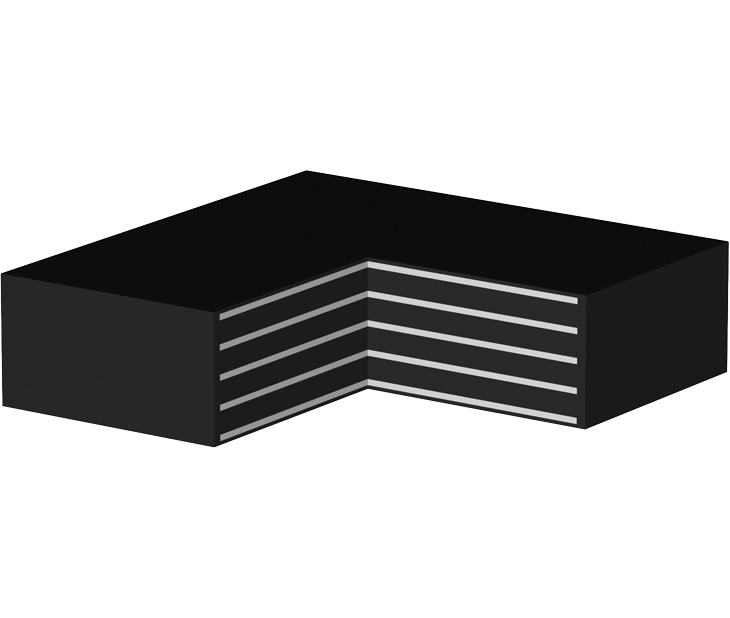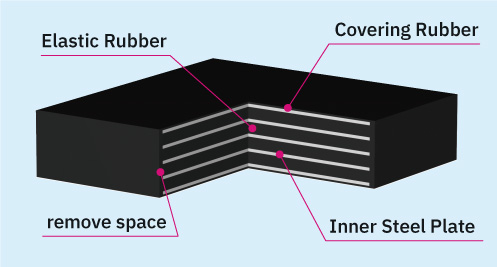RUBBER PAD BEARING
Kawakin PAD BEARING
Product introduction
Kawakin's rubber bearing, CORE-PAD, consists of a vulcanized rubber material with layers of inner steel plates. Rubber sheets are subjected to vertical loads and deformation with displacement due to temperature changes. In addition, the structure of rubber bearings with PTFE sheets will meet the requirements of large displacements with low elevation limits. The PTFE sheet is recessed into the top steel plate of the rubber bearing, ensuring the anti-slip properties of the PTFE sheet from the bearing surface in compliance with the requirements of the current AASHTO LRFD standard for PTFE connection structure in rubber bearings.
※Ordinary PTFE-based rubber bearing products with a structure that directly glues the PTFE sheet onto the rubber bearing do not meet current design standards.
Product features
Prestigious rubber material
The rubber materials used for Kawakin bearing are imported from quality rubber materials in the world, with strict quality control from the input stage to the production stages. Rubber raw materials before production are ground and mixed according to suitable blends to be 100% able to meet the harshest requirements of the project.
Kawakin rubber materials meet international standards such as ASTM M251, ASTM D4014, BS EN 1337-3, Japanese standards, as well as country-specific standards.Characteristic of low temperature resistance
For rubber materials in general, the properties of ruber bearing are affected when encountering negative temperatures. However, Kawakin's rubber is completely undamaged when tested for brittleness at minus 40℃ according to ASTM D746, Method B.Good Ozone resistance
Rubber material is a material that is easily destroyed by ozone, causing small cracks on the surface of the bearing exposed to the environment. Usually polluted environments such as urban or industrial zones, or environments such as the sea or areas with long hours of sunshine are environments with high concentrations of ozone in the air. For common rubber materials, there will be a low life with such environments.
However, with Kawakin rubber, the test requirements in the factory are many times more severe. Kawakin rubber can withstand Ozone concentrations of 50pphm, with rubber samples deforming to 100% for over 100 hours without developing cracks. Conventional rubber samples under the same conditions only withstand about 25 hours.
CONTACT US



